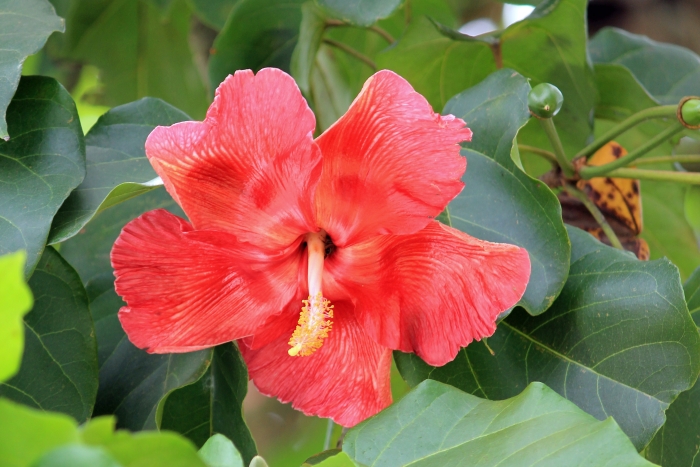Maga
(Thespesia grandiflora)
Maga (Thespesia grandiflora)
/
/

https://www.flickr.com/photos/oquendo/
CC BY 2.0
Image By:
https://www.flickr.com/photos/oquendo/
Recorded By:
Copyright:
CC BY 2.0
Copyright Notice:
Photo by: https://www.flickr.com/photos/oquendo/ | License Type: CC BY 2.0 | License URL: https://creativecommons.org/licenses/by/2.0 | Uploader: Moebiusuibeom-en | Publisher: Wikimedia Commons | Title: Flower_of_the_maga_tree.jpg | Notes: {{information | description = {{en|1= :Image title: Flowers vines plants pods :Image from Public domain images website, http://www.public-domain-image.com/full-image/flora-plants-public-domain-images-pictures/flowers-public-domain-image


















Estimated Native Range
Summary
Thespesia grandiflora, commonly known as Maga, is an evergreen tree native to the coastal forests and wetlands of Puerto Rico. It typically grows to a height of 6-14 feet (1.8-4.3 meters) and a width of 8-12 feet (2.4-3.7 meters), making it a suitable size for small to medium-sized garden spaces. The Maga tree is recognized for its glossy, heart-shaped leaves and large, showy flowers that bloom in shades of pink with a white center, primarily during the summer and fall months. The flowers are hibiscus-like in appearance, adding a tropical flair to the landscape.
The Maga tree is valued for its ornamental beauty and is often used in residential landscapes, public gardens, and as a street tree in tropical and subtropical regions. It is adaptable to a range of water conditions, from high to low, and prefers well-drained soils. While it thrives in full sun, it can also tolerate part shade, which makes it versatile for different garden designs. In terms of maintenance, it is relatively easy to care for, requiring minimal pruning. However, gardeners should be aware that it can be susceptible to pests such as aphids and mealybugs.CC BY-SA 4.0
The Maga tree is valued for its ornamental beauty and is often used in residential landscapes, public gardens, and as a street tree in tropical and subtropical regions. It is adaptable to a range of water conditions, from high to low, and prefers well-drained soils. While it thrives in full sun, it can also tolerate part shade, which makes it versatile for different garden designs. In terms of maintenance, it is relatively easy to care for, requiring minimal pruning. However, gardeners should be aware that it can be susceptible to pests such as aphids and mealybugs.CC BY-SA 4.0
Plant Description
- Plant Type: Tree
- Height: 6-14 feet
- Width: 8-12 feet
- Growth Rate: Moderate
- Flower Color: Pink, White
- Flowering Season: Summer, Fall
- Leaf Retention: Evergreen
Growth Requirements
- Sun: Part Shade, Full Sun
- Water: High, Medium
- Drainage: Fast, Medium
Common Uses
Bird Garden, Potted Plant, Salt Tolerant, Showy Flowers, Water Garden
Natural Habitat
Coastal forests and wetlands of Puerto Rico
Other Names
Common Names: Swamp Rosemallow, Tulipá Del Japon
Scientific Names: , Thespesia grandiflora, Montezuma speciosissima, Maga grandiflora, Montezuma grandiflora, Hibiscus speciosissimus,
GBIF Accepted Name: Thespesia grandiflora DC.